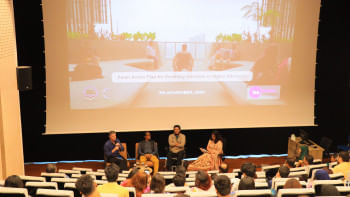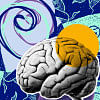Is accessibility an afterthought at our university campuses?

Universities are often considered places with the most opportunities. It is supposed to be a place where dreams take flight and people from all backgrounds come together to learn, grow, and shape their futures; an emblem of progress, fairness, and belonging. Yet, for students with disabilities, this perception often collapses under the weight of a harsh reality. Instead of being empowered, they find themselves navigating spaces that seem designed to challenge their very existence. These spaces are not actively hostile to their needs. Perhaps the root of this issue lies deeper, in something more ingrained: ableism. It is the pervasive belief that being able-bodied is the norm, and anything outside of that is an exception.
Ableism shapes how society dictates its priorities and measures worth. Naturally, it also determines how spaces are designed as it enables the authority to treat accessibility as a luxury and not a right. This prevailing mindset does more than just neglect disabled students. It stifles accessibility and almost entirely erases visibility.
Nashita Islam, a graduate of Dhaka University who is 27 years old, recounts her experience, "In my first semester, I suffered from a major brain stroke that was completely unexpected. I'm lucky that I came out of it alive, with my neurological functions mostly intact, but I've suffered from paralysis ever since. The experience that I've had is proof that disability is something that can happen to anyone of any age at any second. Yet, it seems like asking for basic rights and accessibility is some sort of first-world problem."
Although Nashita's words are a reminder not to take our health for granted, it is a sentiment that appears to be overlooked as campuses remain largely unchanged and thus, inaccessible. This is not just an oversight, it is a form of systemic ableism.
"It's bad enough to be stared at and pitied, but there's nothing more humiliating than not knowing how to get to class because not a single infrastructure is friendly for wheelchairs." Nashita adds, "Many classrooms have few steps in front of them, randomly placed with no use, and the open campus has cobblestones everywhere. I always thought studying here was supposed to be something distinguished, yet every day used to fill me with dread. As if it was not challenging enough that I had to get used to not using my legs, I also had to get used to the fact that even my campus was bent on testing my limits every day."
Her words underscore the indifference that so often surrounds this issue, exposing barriers that deprive students of mobility on an everyday basis.
Afia Kabir Anila, a graduate of North South University, shares her own struggles in navigating a campus that seemed designed to exclude her, "The most challenging part of my journey as a person with disabilities was facing attitudinal barriers. My fellow classmates didn't want to include me in their group, as they thought that I might be slower in submitting assignments or participating in social activities. On the contrary, if they required any notes or guidance about studies, they would come to me for necessary support."
Afia's experience reveals another layer of the problem: the attitudes of peers. Discrimination extends beyond just physical barriers; it also includes social ones that isolate students with disabilities. Yet, the physical obstacles she encountered were equally crushing.
"The infrastructure is not disability friendly. I could not even reach my department as it's on the eleventh floor and the lift only goes up to the tenth. The toilets labelled accessible for wheelchair users are not functional either. I had no choice apart from not drinking water and staying dehydrated just so I didn't have to use the bathroom. The auditorium (Audi 801) also needs to be more accessible," she says.
Her experience illustrates the daily hurdles faced by students with disabilities. Reducing such issues to mere minor inconveniences reflects the systemic failures that diminish the humanity of those affected.
So why do universities continue to fall so short?
Accessibility is too often treated as an afterthought, something to be addressed if and when resources allow. What results is a combination of half-hearted measures – ramps that are too steep, lifts that stop short of crucial floors, and toilets that are labelled accessible but remain unusable.
Afia highlights the superficiality of these efforts, "Whatever initiative the authorities have taken is because of my continuous hammering on social media." Her statement represents the mindset of most authorities, who treat disability not as a priority but as a problem to be managed only when it becomes too visible to ignore.
However, not all campuses are blind to the needs of disabled students. BRAC University (BRACU) stands as an example of how inclusivity and accessibility can be achieved. Jannatul Ferdous, a 23-year-old student of Computer Science at BRACU, shares her positive experience, "Though my disability was temporary, and I recovered after a few months, I felt genuinely supported during that time. The accessible toilets were functional, and when there were issues, help was always available to address them. The ramp was also adequate, but I do wish the elevators were more spacious to accommodate everyone."
Accessibility is not just about accommodating a specific group; it is about creating spaces where everyone can thrive. But beyond its practicality, accessibility sends a powerful message: that education is a right, not a privilege, and that every student deserves to be treated with respect and dignity.
For too long, inclusion has been treated as an option – one that has been dismissed. It is time to acknowledge that inclusivity and accessibility is a moral and legal imperative. Universities must go beyond token gestures and actively dismantle the barriers that prevent disabled students from fully participating in campus life. And this starts with listening to the voices of those most affected. Their experiences must shape policies and practices.
However, it also requires a fundamental shift in how universities view accessibility – not as an expense, but as an investment in their values and communities. Campuses have been built with exclusion at their core, designed primarily for able-bodied individuals at the expense of everyone else. It is time to change that.
Accessibility in universities should reflect society's commitment to equality, where barriers are not just removed but actively prevented. Only then can campuses truly become spaces where all students have the tools to succeed. Universities have a responsibility to be more than places of learning; they must also be spaces of hope and opportunity. The demand for accessible campuses is not just about ramps or lifts – it is about creating a culture of inclusion, where every student feels seen, valued, and empowered.
Tinath Zaeba is an optimistic daydreamer, a cat mom of 5 and a student of Economics at North South University.

 For all latest news, follow The Daily Star's Google News channel.
For all latest news, follow The Daily Star's Google News channel. 










Comments